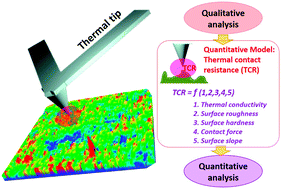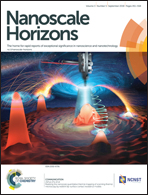Realizing the nanoscale quantitative thermal mapping of scanning thermal microscopy by resilient tip–surface contact resistance models
Abstract
Quantitative assessment of thermal properties by scanning thermal microscopy (SThM) is a demanded technology, but still not yet available due to the presence of unpredictable thermal contact resistance (TCR) at the tip/substrate interface. The TCR is mainly affected by three major interfacial characteristics including surface roughness, hardness and contacting force. In this work, the TCR is mathematically derived into linear and non-linear models based on the interfacial micro-characteristics. The models have the capability to predict the TCR for both rough and smooth surfaces with satisfactory accuracy. With a predictable TCR, the heat transport across the tip/substrate nanointerface can be precisely described and thus quantitative thermal properties can be predicted from SThM measurements. The models are tested in three polymeric material systems, PDMS, epoxy and PVA. The thermal conductivity from the model prediction matches very well (<10% error) with the measured values from bulk polymer samples. Such models use general surface features as inputs, so they have wide applicability to other similar materials, especially polymers. Moreover, the models have been shown to be valid in doped PVA samples when extrapolated to predict thermal conductivity beyond the range of model development. This work extends the capability of SThM in quantitative measurement and enables a unique platform for thermal conductivity measurement at nanometer spatial resolution.



 Please wait while we load your content...
Please wait while we load your content...
